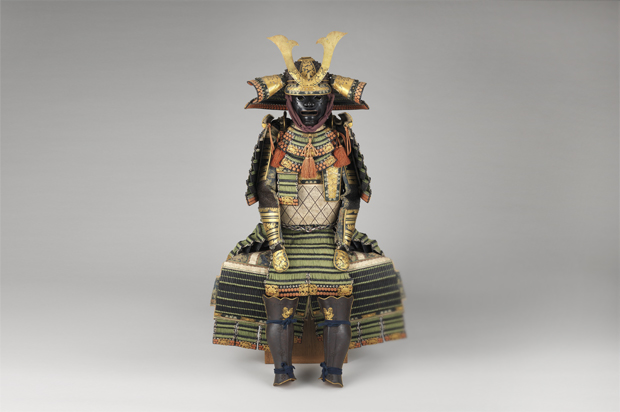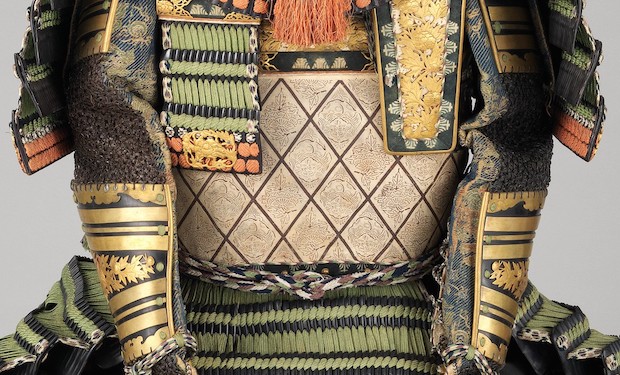Deerskin, the 17th century Japanese style trend with lasting effects
Brandeis professor Xing Hang is examining 17th and 18th century deerskin trade
 Photo/The Metropolitan Museum of Art. Public domain.
Photo/The Metropolitan Museum of Art. Public domain. Decorative Japanese armor from the 18th century that features deerskin.
During the Tokugawa period in Japan, deerskin was in. And the fashion trend may have had effects that are still felt today.
Deerskin first became popular as a decoration for samurai armor, and later on it was often used for slippers. The rise in popularity drove conflict between different status groups in Japan, created a rare instance of merchants from China and Europe competing for a market, and prompted deer hunting throughout Southeast Asia so rampant that it had a destructive environmental effect.
"It wasn't just Europeans devastating the planet," said Xing Hang, a professor of history at Brandeis.
Hang is part of a trio of scholars bringing together their expertise to examine all the facets of deerskin trade during the Tokugawa period, which spanned the 17th and 18th centuries. Hang is an expert on Chinese mercantile networks and ports; Daniel Botsman of Yale University is an expert on Japan’s outcaste communities; and Adam Clulow of Monash University is an expert on Dutch East India Company and trade in South East Asia and Japan.
The project, funded by a two-year grant from the American Council of Learned Societies, will result in a journal article on the subject, an international conference, and eventually a co-authored book.
“We hope to uncover how communications across cultures and class worked to forge an integrated regional economy during the early modern period,” Hang said.
The three scholars will also be exploring whether this structure of trade worked to facilitate the emergence of industrial capitalism in maritime East Asia, a region that remains a dynamic participant in our globalized world.
The historical international impact of the commodities demanded by European consumers has been closely studied and documented, but there is much to be examined when it comes to how consumer demand coming from within Asia transformed the region. The trade of deerskin affected hunters, shippers, artisans, and consumers across the region.

A closer look at decorative armor that features deerskin.
Hang's research for the project will include fieldwork in China and Southeast Asia to examine temples, memorials and cemeteries in search of details about the people behind the trade of deerskin to Japan. These landmarks often have messages carved into stone and plaques that provide information about people and lineage.
Hang teaches courses on subjects like "Silk, Silver, and Slaves: China and the Industrial Revolution,” "Swashbuckling Adventurers or Sea bandits? The Chinese Pirate in Global Perspective,” and "Frenemy States: Identity and Integration in East Asia.” His work in the classroom has led him to more closely examine the deerskin trade, and his research advances his teaching.
"It's been a mutual influence. It's very positive, there is a synergy,” Hang said. “I teach classes that span boundaries in disciplines and that has informed a lot of my projects, which also undoubtedly inform my approach in the classroom."
Categories: Humanities and Social Sciences, Research





